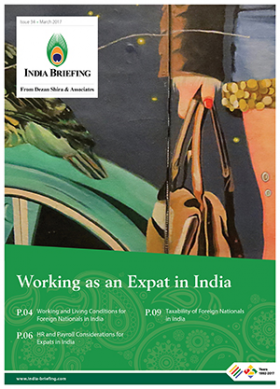India’s 2018 Union Budget: Elections Focus behind Broad-brush Vision
Prime Minister Modi’s government presented its Union Budget for the financial year (FY) 2018-19 on February 1. While some foreign observers have overlooked this year’s budget, it takes on increased importance ahead of the election fight in eight states this year, and the general elections next year.
Modi’s Bharatiya Janata Party (BJP) now rules in 19 out of 29 states, after winning Gujarat for a sixth straight term and wresting Himachal Pradesh state out of Congress rule in December last year. Never before in India’s electoral history has one political party controlled as many states.
The latest budget, therefore, came at a time when the BJP is riding on peak confidence, and looking to further strengthen its political mandate. This campaign thrust was expected to frame the objectives of the budget, with speculation ripe over populist, near-term announcements.
Ultimately, the 2018 budget surprised almost everyone.
Extremely wide-ranging in its approach, analysts rued missed opportunities, while others appreciated the boldness of Finance Minister Arun Jaitely’s latest offerings. Foreign investors should familiarize themselves with aspects of the budget to understand its possible impact on the economy.
A new mantra: ‘Ease of Living’
With their eyes set on upcoming elections, Jaitley’s final budget comes equipped with a new rallying cry of ‘Ease of Living’, appropriating themes associated with the government’s previous ease of doing business campaigns.
The ‘Ease of Living’ mantra underscores this year’s budget’s plentiful promises: alleviate rural distress, invest in infrastructure, and transform historically neglected sectors like healthcare and education.
At the center of the 2018 Union Budget is its flagship proposal to create the National Health Protection Scheme – touted to be the world’s biggest public funded healthcare system. The Scheme will cover 100 million poor and vulnerable families, and benefit around 500 million Indians. Under the scheme, US$7,788.47 (Rs 5 lakh) will be provided by the state, per family per year, for medical reimbursement.
Other key proposals aimed at winning the rural vote include: fixing Minimum Support Prices (MSP) at 1.5 times the production cost, provision of free cooking gas connections to 80 million poor women, construction of 20 million more toilets under the Swachh Bharat Mission, railway infrastructure improvements, rural road development, housing for all by 2022, high-priority irrigation projects, and cheaper regional air travel options.
Altogether, the total capital outlay for the infrastructure sector increased by about 21 percent to US$929.91 billion (Rs 5.97 trillion), and should bolster long-term projects, such as the Smart Cities Mission and affordable housing program.
Corporate tax rate cut for MSMEs, urban India feels the pinch
In winning rural hearts, the budget lost any scope for doling out clear incentives for big corporates, startups, and the salaried middle class.
The long term capital gains tax (LCGT) returned at 10 percent for investments over US$1,556.74 (Rs one lakh), with no reduction in the general corporate tax rate (CIT). Presently, India’s tax rate is 30 percent for partnership firms and domestic companies (other than small firms and manufacturing companies), and 40 percent for foreign companies. While the U.S. cut down its corporate tax rate from 35 to 21 percent and Japan from 30 to 20 percent, Jaitely has yet to fulfill his 2015 budget promise – the gradual reduction to a standard 25 percent CIT.
What the 2018 budget has done is offer the much touted 25 percent CIT to micro, small, and medium enterprises (MSMEs), by expanding the eligible base from firms with an annual turnover of less than US$7.79 million (Rs 50 crore) to US$38.94 million (Rs 250 crore). Since MSMEs account for 95 percent of Indian companies, the proposal balances the books (India Inc. pays the bulk of corporate taxes), and makes the case for domestic reinvestment and job creation. The budget proposes tax incentives for companies under Section 80JJAA of the Income-tax Act for every additional job created.
India’s salaried middle class, however, have been left in the cold as no changes were introduced in the personal income tax structure; tax breaks on savings instruments under Section 80C remain unchanged. While the concept of standard deduction returns, with a base amount of US$623.08 (Rs 40,000) not subject to tax, the budget increases the rate of cess charged from 3 to 4 percent, increasing the overall effective tax rate. This cess, renamed the Health and Education Cess, will also apply to all products and services—and will make almost everything slightly more expensive.
Further, in a last mile effort to boost domestic manufacturing and sourcing, the government has hiked customs duty on a range of popular imports, including mobile phones, toys, watches, footwear, imitation jewelry, as well as certain specified precious stones, auto parts, and cosmetic items. This measure, unfortunately, will put a dent in middle class consumer pockets.
Making sense of this budget
Prime Minister Modi and his cabinet have taken a calculated risk in announcing policies and incentives that will not see immediate results. For one, in in the agriculture sector, the government has deliberately chosen not to waive farmer loans, a huge stressor in the sector, but instead work on an income support scheme.
Moreover, while the budget refrained from big bang announcements, it launched a mega healthcare insurance plan. Yet, how the National Health Protection Scheme gets implemented has itself left researchers and stakeholders puzzled, with the numbers presented by the Niti Aayog not adding up.
The challenge for the Modi government is now to effectively communicate what actually works in this Finance Bill and for whom – in recent years the budget has all but been a statement of intention, with little success in implementation to validate anything more.
With elections coming up in key states and the chance to renew its massive 2014 mandate next year – the stakes could be very high, this time around.
About Us
India Briefing is published by Asia Briefing, a subsidiary of Dezan Shira & Associates. We produce material for foreign investors throughout Eurasia, including ASEAN, China, Indonesia, Russia, the Silk Road, & Vietnam. For editorial matters please contact us here and for a complimentary subscription to our products, please click here.
Dezan Shira & Associates provide business intelligence, due diligence, legal, tax and advisory services throughout India and the Asian region. We maintain offices in Delhi and Mumbai and throughout China, South-East Asia, India, and Russia. For assistance with India investment issues or into Asia overall, please contact us at india@dezshira.com or visit us at www.dezshira.com.
- Previous Article Les villes Tier II et Tier III en Inde : sont-elles adaptées à votre entreprise ?
- Next Article Körperschaftsteuer in Indien












